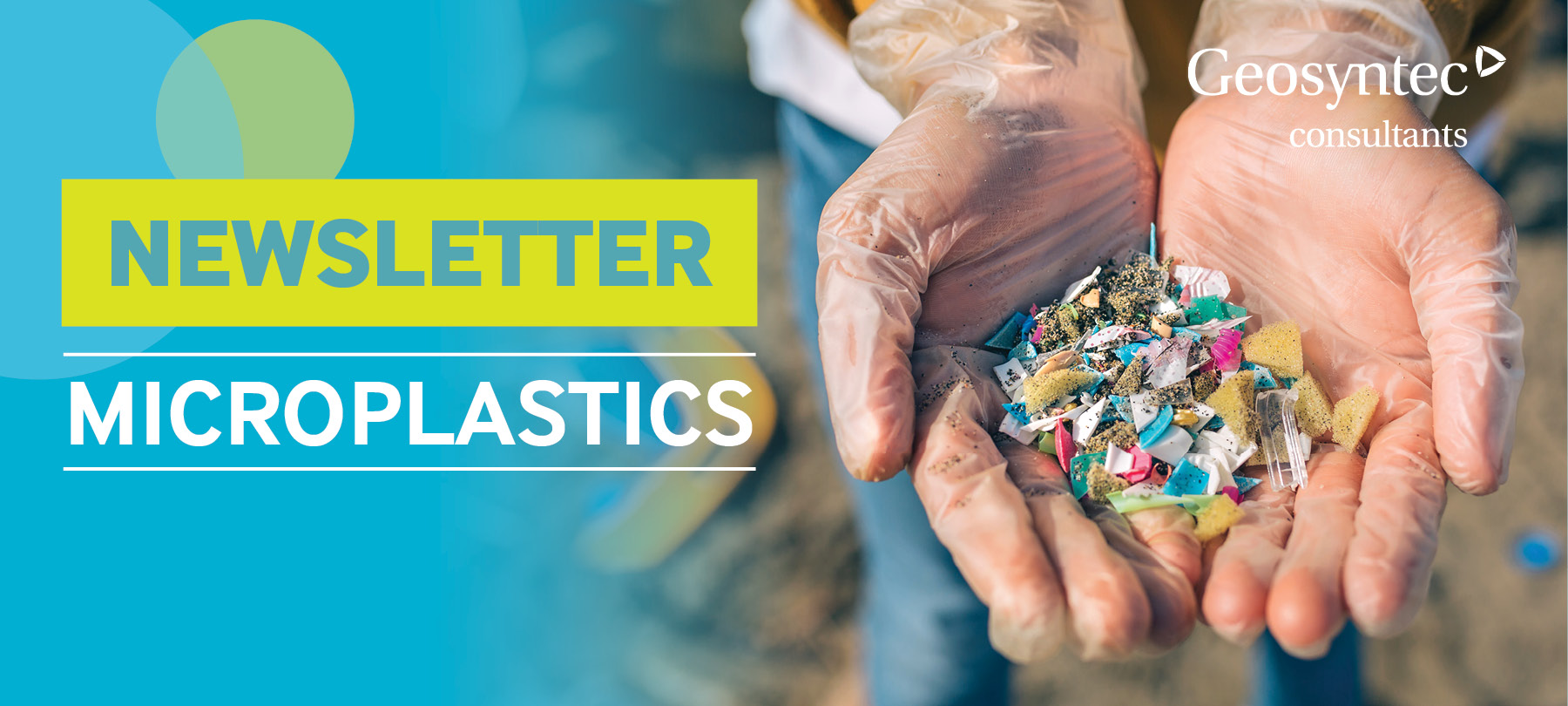Microplastics Newsletter: Q2 2024

Microplastics Fate and Transport in Water Distribution Network
A recent UK study evaluated the presence of microplastics (MP) in the municipal water supply at different distribution stages. The researchers collected water samples from networks managed by seven water companies in England, Scotland, and Wales and analyzed for microplastic particles larger than 25 micrometers (µm) and of 21 different polymer types. While the concentration of microplastics leaving the treatment plant ranged from 0.00011 to 0.7 microplastic particles per liter (MP/L), samples from customer taps showed higher levels, from 0.02 to 1 MP/L, indicating there may be additional sources of microplastics in the distribution network. The average microplastic concentrations found in this study (> 25 µm) were similar to those found in studies from Germany, Spain, and the Netherlands. Overall, the authors concluded that the risk of exposure to microplastics from tap water is lower compared to other commercial beverages and that, “the absolute number of microplastics in the water distribution network remained extremely low.”
USGS Publishes Strategic Plan for Microplastics
Federal and State governments, including the United States Geological Survey (USGS), are prioritizing research to understand microplastic sources, pathways, and impacts, exemplified by legislation like the Federal Microbead-Free Waters Act and various state initiatives. This document outlines USGS’s strategic plan to prioritize research to identify and quantify microplastics in ecosystems, assess potential health risks, and understand the environmental impact, with a focus on fostering collaborative efforts among federal, state, tribal, and academic entities.
Microplastic Accumulation in the Brain, Liver and Kidney of Mice
A recent study evaluated the metabolic impacts of MP exposure on mice, focusing on the ability of sphere shaped particles to accumulate in various organs. Mice were exposed to 5 µm polystyrene microsphere or a mixture of microspheres (5 µm polystyrene and 1-4 µm polyethylene microspheres) at oral doses of 0, 2, or 4 milligams (mg) per week. The authors reported accumulation of microplastics in the brain, liver, and kidney. The authors noted concentration-dependent and polymer type-specific changes in these organs. The authors concluded that “These results underline the mobility within and between biological tissues of MPs after exposure and emphasize the importance of understanding their metabolic impact.” The authors noted limitations of the study included the use of commercially bought microplastics that lack common chemical additives like phthalates, BPA, or PFAs, potentially underestimating their full health impact. Additionally, current techniques such as Py-GC/MS, Raman spectroscopy, and microscopic visualization have limitations in identifying particle size, shape, and detailed chemical composition, highlighting the need for novel methodologies to better characterize and quantify microplastics in biological tissues.
Microplastics and their Connection with Cardiovascular Events
An observational study examined microplastics and nanoplastics (MNPs) in carotid artery plaques of patients undergoing surgery for asymptomatic carotid artery disease. Polyethylene and polyvinyl chloride MNPs were detected in the carotid artery plaque of 58.4 percent (%) and 12.1% of the 257 patients who returned for a follow-up study, respectively. Electron microscopy revealed visible foreign particles, some containing chlorine, indicating the presence of polyvinyl chloride. The authors noted that patients with MNPs in their plaques had a higher risk of heart attack, stroke, or death compared to those without MNPs. The authors acknowledged limitations of the study included the potential for laboratory contamination, uncertainty regarding the extent the results can be extrapolated to the general public (since only cardiovascular disease patients were studied), and lack of information on socioeconomic factors of the subjects that may have increased their exposure or intake of MNPs.
Microplastic Presence in Dog and Human Testis
This study quantified and characterized microplastics in 47 canine and 23 human testes to understand the potential for adverse effects on the reproductive system, specifically sperm quality. All samples contained microplastics, with significant variability; mean levels were 122.63 micrograms per gram (µg/g) in dogs and 328.44 µg/g in humans, with the microplastics predominantly being composed of polyethylene. A negative correlation was found between specific polymers (PVC and PET) and testis weight. The study underscores the complex interplay of environmental, dietary, and lifestyle factors in microplastic accumulation and calls for further research to determine the health impacts and dose-response effects on the reproductive system.
Regulatory Roundup
- The fourth meeting of the Intergovernmental Negotiating Committee (INC-4) aimed at developing an international legally binding instrument addressing plastic pollution, especially in marine environments, convened from April 23 to April 29, 2024, in Ottawa, Canada. The ideal outcome of the INC-4 was to have an updated draft text of the Treaty. The Revised draft text of the international legally binding instrument on plastic pollution, including in the marine environment (UNEP/PP/INC.4/3) is available in all six UN official languages.
- California is advancing its comprehensive regulations to reduce single-use plastic and packaging waste, aiming to combat pollution and promote recycling. In 2022, Governor Gavin Newsom signed the Plastic Pollution Prevention and Packaging Producer Responsibility Act (SB 54), mandating that by 2032, producers must cut single-use plastic packaging by 25%, ensure all packaging is recyclable or compostable, and recycle 65% of single-use plastics. In early 2024, draft regulations were proposed, initiating the formal rulemaking process. The law would also establish a $5 billion fund to address plastic pollution in affected communities and promotes job creation in the recycling sector through grants and workforce development initiatives.
- The Canadian federal government has agreed to prioritize the environmental assessment of a chemical used in tires, 6PPD, which has been linked to the deaths of Pacific salmon. This decision follows a request from environmental groups represented by Ecojustice and a letter from Environment Minister Steven Guilbeault confirming 6PPD will be added to the priority list. The assessment will determine the chemical's toxicity under Canada's environmental protection law and inform a management plan to be published for consultation this summer.
Sign up now to stay informed with the latest updates from our quarterly microplastics newsletter!
